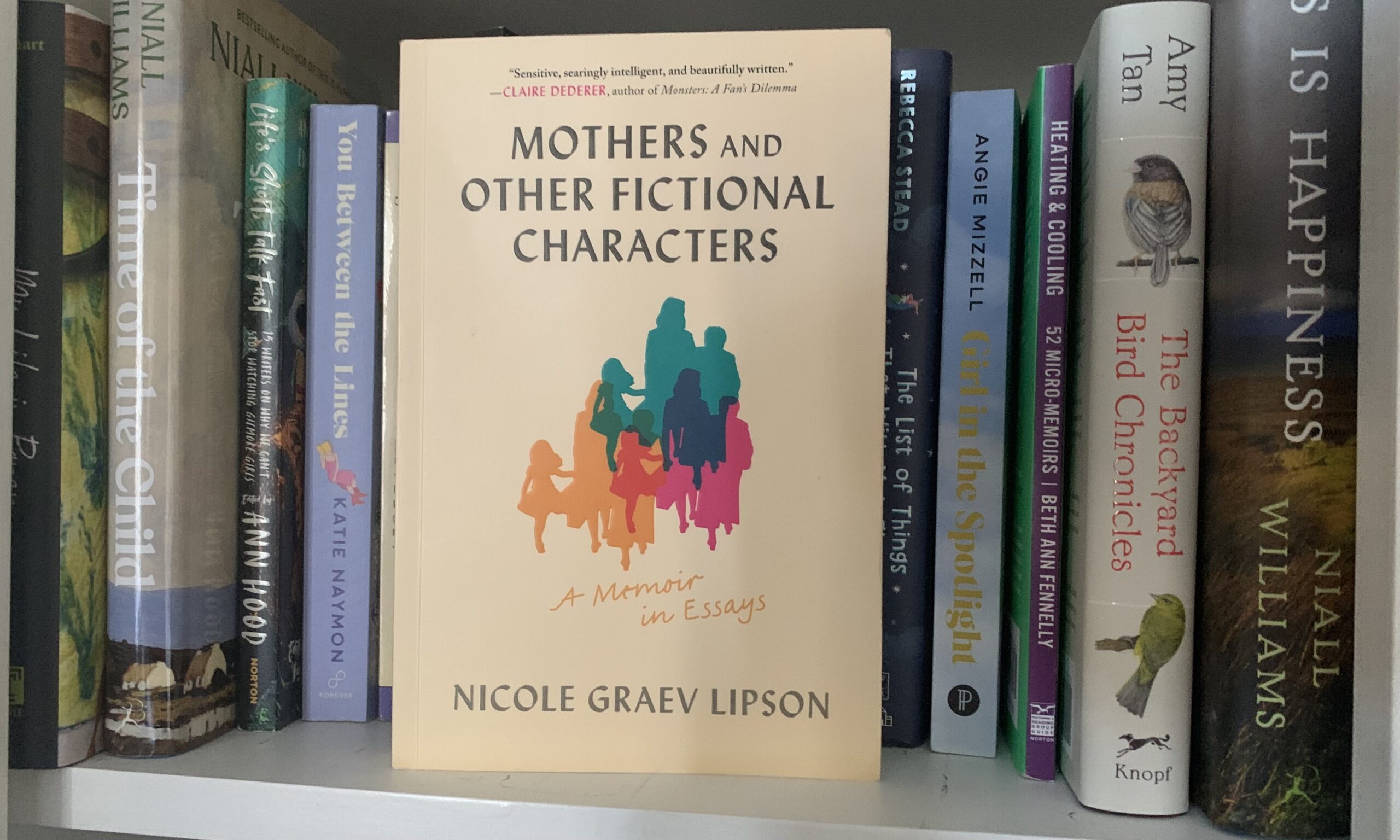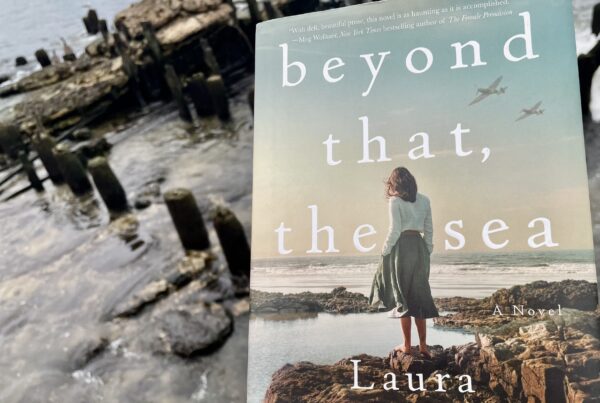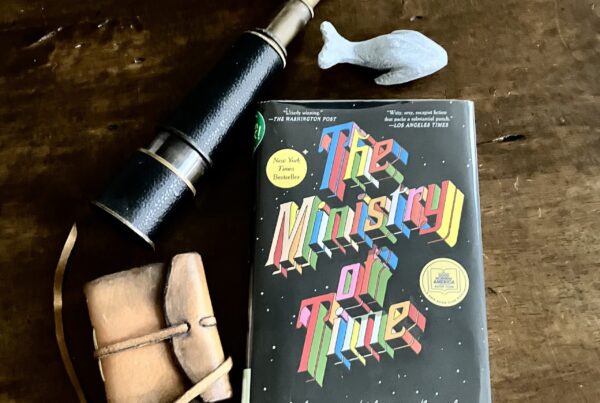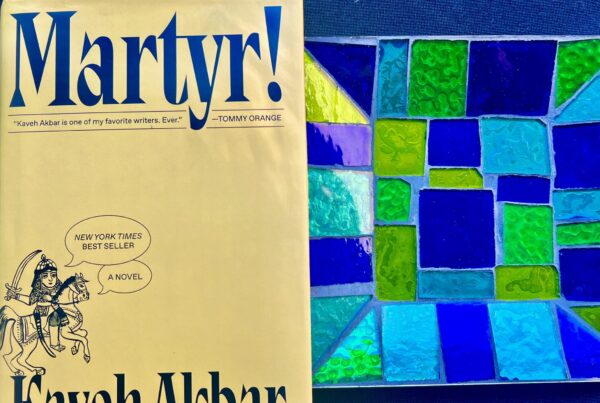This Mother’s Day, forget the flowers or the chocolate. Instead, head to Bookshop.com and order multiple copies of Nicole Graev Lipson’s gorgeous memoir in essays, Mothers and Other Fictional Characters. This is the book I wish I had when I was trying to figure out how to be a mother–and a thinker and a wife and a teacher and a person and a daughter and a friend. I wish I had had this book when motherhood felt so occasionally overwhelming that I mistrusted every instinct. Though I was appreciative of the wisdom my sister and friends offered, I yearned for a book that saw me–not What to Expect, but rather a book that understood the profound changes I was undergoing. The babies were fine; there were moments, though, when I wondered whether I was fine. Our babies were hard-won after many losses, so I thought motherhood should somehow be intuitive. But I still remember worrying at 2 a.m. with the weight of a cranky infant who refused to sleep on my shoulder. I know now that things do change, that they do, for the most part, improve. Even tough phases in parenting are not permanent–a child being excluded from a birthday party, a child struggling with handwriting, a child reluctant to go to school or sleep alone–all these things got better, but in those moments, I wanted Nicole’s book as a guide and comfort. My own three children are now 32, 30 and 20, but Nicole’s meditations on mothering are exquisite, whatever the age of a mother-reader. Of course, I couldn’t have had Nicole’s book back then: she was a junior in the Manhattan all-girls’ school where I taught when our first daughter was born.
Told in twelve essays, Mothers and Other Fictional Characters is an extraordinary investigation of motherhood. It is brilliant and expansive in the ways Nicole links her own questions about being a mother to historical, cultural and religious contexts; often, she draws on literature and mythology to elucidate her own thinking. Even when I did not know the precise work she referenced, her summations and commentary were so clear that I felt I had full command of the texts she cited–and she included a reading list, too! One gift Nicole possesses is to take a particular moment, then to zoom out and ground that moment in a much broader context before she zooms back in. We watch her telling endless bedtime stories to her daughter or pressing the accelerator as she drives with abandon–as she once did as a very young woman–into the morning that awaits her. She allows us to accompany her during her musings and on her endless work as a mother. She is unflinching and compassionate about her own growing up and her relationship with her parents, husband, and three children. We are with her as she considers aging, friendship, appearance, and tropes about women. The essays are distinct, but each is augmented by the others, so that the whole is greater than the sum of its parts. I savored this volume, rationing how many essays I read in a sitting.
Often, as I read, I nodded. I underlined and jotted margin notes–the habit of a life-long English teacher. I felt I was in conversation with Nicole, that she was sitting across from me, sipping tea, the two of us having carved out precious time away from our other obligations. The balance between being in a relationship–with friends, with partners, with children–and finding time to be alone, to be our own selves, not our mother selves–is a complex source of tension for many mothers. This line resonated for me: “Mothers’ smuggled moments of solitude might be the best-kept secret of our era.” How well I recall spending longer than necessary in the bathroom just to try to quiet my mind before plunging back into the chaos that our family devolved into between 5 p.m. and bedtime. And, sadly, I do not know any mother who has not been dogged by this observation: “What has felt lonely, unbearably lonely, is harboring in silence my suspicion that I’m the most flawed and compromised mother walking the earth, with my recurring urges to flee what I most love.”
Like many, Nicole believed she could make the rules about gender–no guns for her son, no damaging messages about bodies for her girls. Writing about what it is to mother her son, she reflects, “But you cannot stop the world from telling your daughter how pretty her tights are or exclaiming over the muscles of your big, strong boy. You can curate the books your children read and the TV shows they watch, but gender rules still slip undercover into your children’s porous and acquisitive brains.”
Time is fluid in the essays: Nicole jumps back and forth to her girlhood, to her time as a young teacher to thoughts about the future. We are anchored in the present, but we move with her as our trusted guide through her past. She reflects that she is now likely the age of the women teachers who inspired her and is drawn to a wise older neighbor who is completely herself. We are all of us, I think, searching for those older women in our lives who affirm us and show us a version of aging that appeals rather than repels us.
Vulnerable, tender, super-smart, the essays are a card-catalogue of the topics and questions that absorb mothers: infertility, the transition to motherhood, our relationships with our own mothers, our relationship with our bodies, the depiction of mothers in literature, mom-guilt, the witch/goddess trap, gender and identity. With candor, Nicole notes when her daughters swim away from her in the sea, screaming that she is a sea monster, “‘I am a mommy, and I am also a monster.” Aren’t we all? Much later, recounting her daughter’s nightmare about Ursula, the Sea Witch, she notes: “The monsters haunting [her]dreams have always taken the form of aging women: She has learned, already, to dread her future self.” I gasped in recognition.
I appreciate the respect Nicole has for her children as individuals, and I love this realization: “It dawns on me that the most loving thing I can do for my children might just be to appoint myself protector of their inner lives, custodian of their autonomy, fierce and stout defender of their solitude. It’s hard to give your children what you have not been able to give to yourself. This, too, dawns on me.”
Later she adds, “It takes great courage, I’m discovering, to help one’s children become who they really are. This is the mother journey that calls to me, the heroism I long to summon.” For me, Nicole is already making that journey, already a heroine because of the gift she offers with this collection.
Mothers and Other Fictional Characters helped me take stock, reflect, consider. The stages of mothering pass fast though we cannot know that when we are in them, held, as it were, in a storm–we can feel tossed and frightened and alone, swept up in forces that feel utterly beyond our control. This is why I will give this volume to the mothers I love. In the storm of our mother lives, it is good to pause, to find moments of grace and space.




